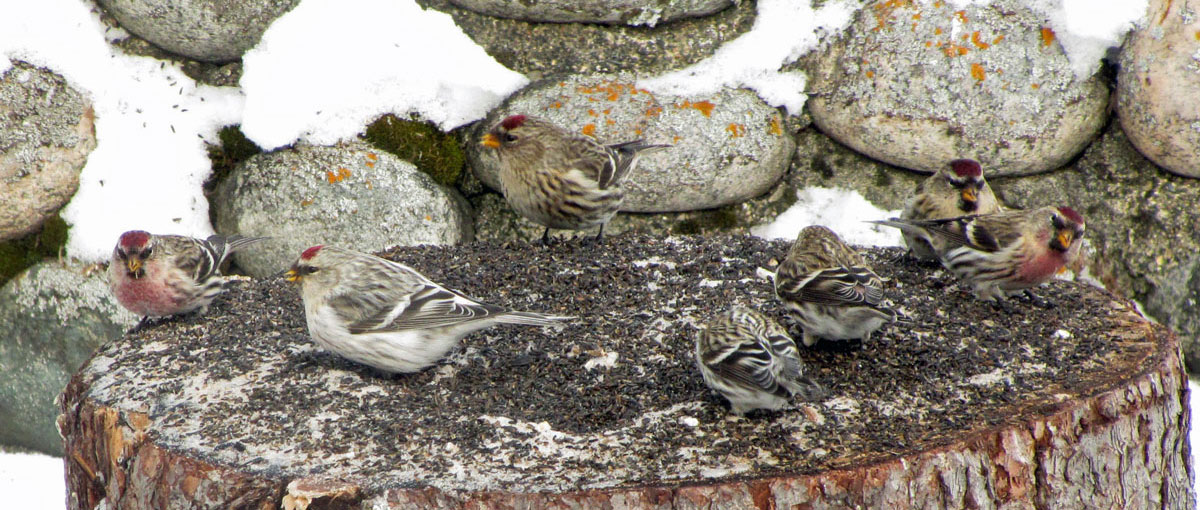Michael Butler of Marathon, Ontario sent me the remarkable photo below, showing all four taxa of redpolls (four subspecies, two species) in one view (see more at his blog here: http://northshorenature.blogspot.com/

The Hornemann’s Hoary is the most distinctive – larger than the “typical” birds and very pale, also looking exceptionally fluffy and “well-padded” which is sometimes a useful indicator.
Greater Common Redpoll is also large, and the darkest and brownest bird in the group. Some typical Commons can have the same warm brown wash and heavy streaking, but the very extensive and heavy streaking combined with the large size allows us to identify this bird confidently as a Greater. Notice how heavy streaking continues across the cheeks, down the sides of the neck and onto the breast, where the typical Common Redpolls have unstreaked areas.
Typical Hoary Redpoll (viewed from the back) differs from the typical Common just to its right in having an overall more frosty appearance, with lots of pale gray/white streaks in the center of the back and along the scapulars where they overlap the wing. You can also see the relatively narrow streaks on the flanks in comparison to the Common.


Hello David,
Great instructive shot there, thanks for putting it up, and kudos also to the photographer Michael Butler! A couple of years ago I worked a spring season at Whitefish Point, Michigan Upper Peninsula, where I had the opportunity to study Common and Hoary Redpolls side by side. Back then I blogged about redpoll identification here, with a set of photos: http://johnvandort-ontheroad.blogspot.com/search/label/Hoary%20Redpoll. The feeders behind the Owl’s Roost gift shop at Whitefish Point are an excellent location for studying redpolls!
This is pretty amazing. How common is it that they would all be together like this? I really appreciate the todays informative lesson! ~karen
Pingback: Winter Bird List for Northumberland County Update 5 | Miramichi Naturalists' Club